While sitting in your co-sharing office space, anxiously waiting to make your next presentation on your App, you ponder nervously if your investors would be interested in your App.
You have worked with your team for many months and this next presentation is one of many you have made to scrutinizing investors. You continue to meet and greet potential investors hoping for a buy-in on your ideas.
With each presentation so far, you wonder where the money will come from.
The deficit is getting bigger and you need an investor desperately. Just as you are about to enter your next meeting, you receive a pleasant call from a potential investor, excited to invest with you but clearly wants equity in your company.
You are so excited to reel in the investor that you are prepared to sign any document and here is where the mistakes can be costly.
MISTAKE #1: Choosing An Investor Without Doing Your Due Diligence
Do not judge an investor by his appearance or his enthusiasm or the way he or she speaks with authority. An expensive, nice-looking watch or big luxury car does not mean anything except that your investor lives a certain lifestyle. It does not mean that the investor is the right fit for your company.
- Check if the investor is investing in his personal or corporate capacity.
- Check if the investor’s company is duly authorised to enter into negotiations with you; or
- Is it a fishing expedition for the companies looking at what is available in the market?
- Have you signed an iron-clad Non-Disclosure Agreement before sharing your business plan?
It would help you decide whether your investor is serious.
- Look at whether the investor is a venture capitalist or an exempt fund management company looking to diversify its portfolio.
- Check the investor has made other similar investments within your industry.
It will give you the assurance that the investor is aware of what risks are involved in investing in your industry.
Be extremely careful with private investors or individuals as some of these could be your close friends, family or relatives whom you have persuaded to invest with you.
You may have painted such an amazing picture with great profits and potential that you may have down-played the real risks (or probably forgot to mention them). The untrained individual investor is going to hold you accountable for everything you say and claim that this is what you represented to him to be the facts. Sure, “buyer beware” but this will be the start of your problems if your investor starts to kick a fuss internally disrupting your business.
Do your due diligence early so that if you, for whatever reasons realise that this investor is not a glove-in-hand fit, then at least you have not wasted much time and can look forward to the next potential investor.
It is understandable that you do not want to lose your investor’s interests but better to avoid trouble before your investor becomes part of your share capital.
MISTAKE #2: Discussing Equity When In Fact It’s A Convertible Loan Agreement
Now that you have found the right investor, your investor tells you that he will be investing, for example, $500,000.00, more than what you need for now. You are overjoyed, the champagne has popped, and you go ahead and hire the extra tech support you needed from overseas to improve on your App.
The eager but shrewd investor (probably because he consulted lawyers) then gives you an agreement of many pages. The investor tells you that it is an agreement where he will invest for one year and then decide whether he wants to invest further after one year.
You hear only the last few words that your “beloved” investor will invest further after one year, and you sign the agreement complaining that there are too many pages for this agreement.
- First, you trusted your investor.
- Second, you forgot to read the agreement; and
- Third you thought you had to give up part of your shares but did not think that you had to give up very much.
Here is one scenario. One year from now your “beloved” investor sends you a letter asking for all the moneys invested in the company for the last year. You scoff and protest that it is an investment and call your investor a crazy person.
Your investor now turns to page “x” of the agreement (which you signed blindly) and shows you that the investor was in the first year, lending you money and that if the investor chose not to convert the loan to equity, he would be entitled to seek repayment of the full loan.
Some agreements would be cheekier in that if you were unable to repay the moneys which you received before the deadline, your investor, as an option, could take over all of the shares from you.
This can be devastating to any company who entered into a convertible loan agreement and is now unable to pay when it is due and payable.
This means that you must know what agreement you are entering. Is it a convertible loan agreement or is it a straight forward equity investment? If it is an equity investment, you would likely be signing subscription and allotment agreements or a sale and purchase agreement for the sale of shares in your company.
Convertible loan agreements are common in the start-up industry as there is no certainty that the App or the product will ultimately work. If so, negotiate carefully and thoroughly review every clause and think whether such a clause will shut you down if you are unable to deliver any of the terms and conditions.
Investors tend to be opportunistic but are not unreasonable if you know how to negotiate and what to negotiate on. If you leave it to the investor to dictate the terms, high chances are that the agreement will be slated in favour of the investor.
MISTAKE #3: Extending A Personal Guarantee
In your in negotiations with an astute investor, you may come across an investor asking you to put your money where your mouth is and ask that you put up a personal guarantee.
Owners and founders are so excited to get their products to the market that they are prepared to sign anything to get a hold on the investor’s money.
You may have a situation where the investor is prepared to enter into a clean-cut equity agreement but demands for a personal guarantee to be executed by you, your partners or directors and sometimes even your family members. The pressure to accept the investor’s proposal is so great that you overstate your abilities and resources and agree.
The condition for the guarantee to be triggered could be as simple as repayments by way of dividends within 12 to 18 months and if no payments are made, the guarantor guarantees to make payment. 12 to 18 months later, while the company has achieved break-even with orders, it does not have the cash flow to make any repayments to the shareholders. Unreasonable investor hits the roof with his demands and threatens to sue the company and calls on the guarantee. Negotiations fails, tempers flair and a decent company rising through the rough is now deeply in trouble because of potential lawsuits by unhappy shareholders.
Be extra careful with guarantees and volunteering to be a guarantor as the sphere to argue any defence or to get out a guarantee is very limited. This means that if you have validly executed a guarantee, you are liable so long as your principal is liable to the creditor. It is only when the principal has discharged his burden, you will be released of your guarantee.
MISTAKE #4: Over-committing & Over-promising
The single most important factor in choosing an investment for the investor is the returns he or she will receive from the investment. To the investor, this includes being able to know where his money is being spent or its purpose, able to receive the initial investment as quickly as possible (i.e. return on investment), understanding his risks of losing all his investment and getting a rate of return (or a win-fall) better than all the financial products outside.
To mitigate this expectation, you start by preparing an over-zealous business plan. Your business plan says that your investor will be able to recoup his initial investment in 12 to 24 months because you are confident that more investors will join in.
In person, you assure your investor that his investment will come back even quicker than 12 months.
You pitch to your investor that you have potential customers, all viewing your product and orders are about to be filled but purchase orders have not been sent out.
You then assure your investor in person that in fact the deal is confirmed; it’s just that the customer’s senior management is waiting to give the green light. In your mind, it is a done deal.
You then go ahead and promise the investor that if you can have his or her money by next week, you could take advantage of recent technological products which would pivot your company to the front and secure customers faster.
Your last sincere promise is that you have a hard-working team and that you project your growth rate at 36% per annum (or such ambitious figure) with a rate of return of close to 20% and costs to revenue maintained as the previous year.
You, however, underestimated the labour costs or that you needed additional premises now that your team is growing bigger. You realised that your team needed more time to prepare the upgrades and updates. Your customers are taking too long to respond to you and you have no orders filled even with the investor’s money. There is however a “burn rate” (what is a commonly known parlance where a tech company spends money as working capital in the interim hoping for its product to kick off in a big way or for a VC to come forth and invest in the tech company aggressively with all financial strength).
Several months later, your investor, especially an individual investor, is enthusiastic and hopeful that his investment is producing the results that you had painted to him, is now deflated that you are unable to explain to him that all of his money is gone towards the burn rate. You probably also need more money from him.
Upset and angry that you are unable to explain to your investor or you have been deliberately avoiding him, your investor files a police report calling you a “scammer” or “cheat” or accusing you of not having a valid business. An unhappy situation.
- From the start explain to your investor with realistic figures your business numbers.
- Be clear to your investor that the figures are estimates.
- State clearly in your business plans words to the effect that the numbers, figures are estimates only and are not representations from you and that the investor must carry out his or her own due diligence of your company.
- State the risks out early and provide solutions on how you are going to deal with the risks.
This means disclosing your risks, threats and assumptions right from the beginning so that your investor can make an informed decision and your investor cannot fault you for failing to disclose all your risks.
Avoid over-committing to your investors and definitely do not over-promise in your delivery. Remember that it is not your money and you will have to account for every dollar spent to your investor.
MISTAKE #5: Failing to Enter Into Or to Ratify the Existing Shareholder’s Agreement
In the past, without investors, perhaps it would not have mattered whether a shareholder’s agreement existed.
Now with an investor, your investor may insist that there should be a shareholder’s agreement. Your investor would want to set out how the quorum for directors or shareholders are met, stating the type of resolution needed for specific decision-making issues. The shareholder agreement would also require details on how dividends are paid and how shareholders could exit your company or if the shares were bought over by third parties.
You may have already anticipated a shareholder’s agreement and after the investor has come on board, no further steps were taken to ensure that the new investor/shareholder signed an agreement to be part of the existing shareholder’s agreement.
Let’s say that you have done swimmingly well, and your company is a target by a US company intending to expand its footing in Asia. There is, unfortunately, no clause in the agreement for all the shareholders to be dragged along or tagged along. You and your existing investor retain some shares but only as a minority.
Your new US shareholders inform you that they refuse to recognise the arrangement you had with your investor because your investor never ratified the existing shareholders’ agreement and therefore existing rules do not apply and your US shareholders demand that a new shareholders’ agreement be drafted wiping away your existing arrangement with your investors.
MISTAKE #6: Entering Into An Agreement With An Investor Without Checking If The Company Is Allowed To Do So
A real problem which many start-ups face is going about doing elaborate deals. Examples such as convertible loan agreements with options to issue preference shares, non-redeemable with no voting rights or allowing the new investor or shareholder to use Company’s funds to purchase for the shares and the list goes on.
Lo and behold, none of these elaborate schemes is catered for in the company’s constitution. Strictly speaking, the constitution is the agreement governing the relationship between the company and its members and it is one of the primary documents that the Courts will give weight to for its express terms.
In a few cases observed, litigants in court pleadings have argued that shareholder agreements which attempt to override the company’s constitution are null and void. Any changes, if proposed and agreed in the shareholder’s agreement, should have been reflected in the company’s constitution. This only leads to unnecessary litigation between you and your investors.
Before entering into any agreement with your investor, check that the company’s constitution allows for such deal structures. Where the constitution is silent, make the necessary amendments to the company’s constitution to reflect the arrangements between the company and its shareholders.
MISTAKE #7: Entering Into A Commercial Agreement With An Investor But Failing To Understand the Contents
With a wealth of information available to all on the internet, you suddenly think that you have the supposed ability to understand any agreement and to attempt any agreement on your own.
It may be tempting to do your own agreement or to copy a sample found on the internet. You must also realise that each sample serves a specific purpose and it was likely created on for a different set of factual matrixes from your own.
Copying a sample agreement can be fatal to you. You may be copying a sample from a different jurisdiction which does not apply to Singapore or relying on an old sample which is no longer good law in Singapore.
In summary, here is your checklist in avoiding costly mistakes in dealing with investors
- Sign a non-disclosure agreement;
- Do the legal due diligence on your investor;
- Review your constitution to confirm whether your company can carry out the relevant equity exercises and amend it if necessary;
- Propose, prepare, review and revise your shareholders’ agreement;
- Be clear on the agreement to be signed and terms as to whether it is convertible loan agreement, subscription agreement;
- Be extra vigilant of whether you are expected to sign a personal guarantee;
- Be sure and understand the contents of the agreements you intend to sign (especially if you prepared it or got it from untested sources). Check that the agreement is applicable to Singapore law and is still good law in Singapore;
- Most importantly, be realistic on your returns and avoid over-promising. Always disclose all risks frankly.
Brought to you by DLLC Legal News
DL LAW CORPORATION is a Singapore-based law firm that helps businesses and business owners with their legal needs. The firm is a keen supporter of Small and Medium Enterprises and advises many SMEs on their legal issues, both corporate and litigation matters. Grab a FREE CONSULTATION today at DLLC Legal or send your email to contactus@dllclegal.com to book your appointment.
The contents and views set out above are those of the author(s) and/or are personal views and for information only. It does not constitute in any way any legal advice or representation to the reader even if the facts appear similar to your fact situation. You are strongly encouraged to seek legal advice should you have any legal issues.







